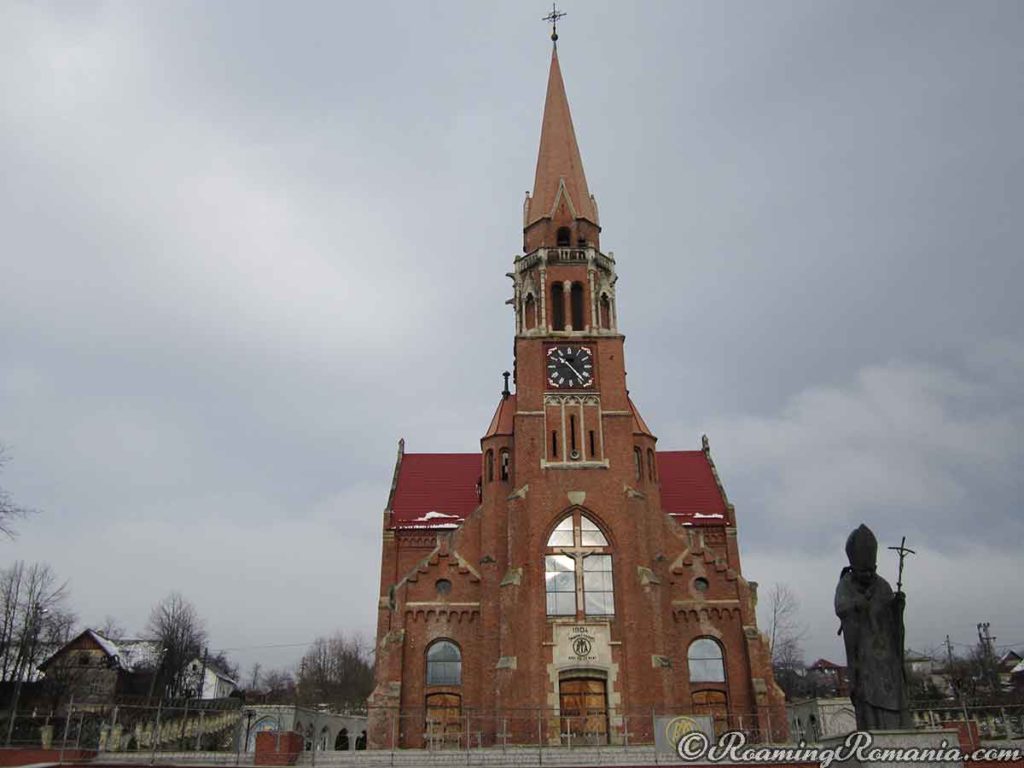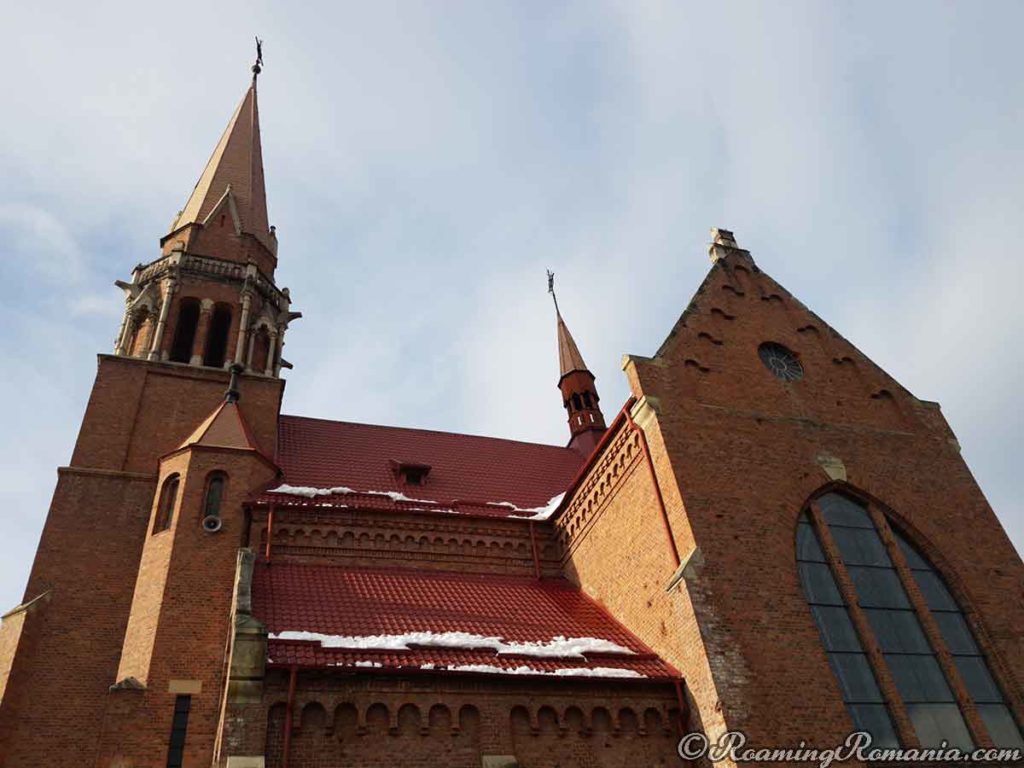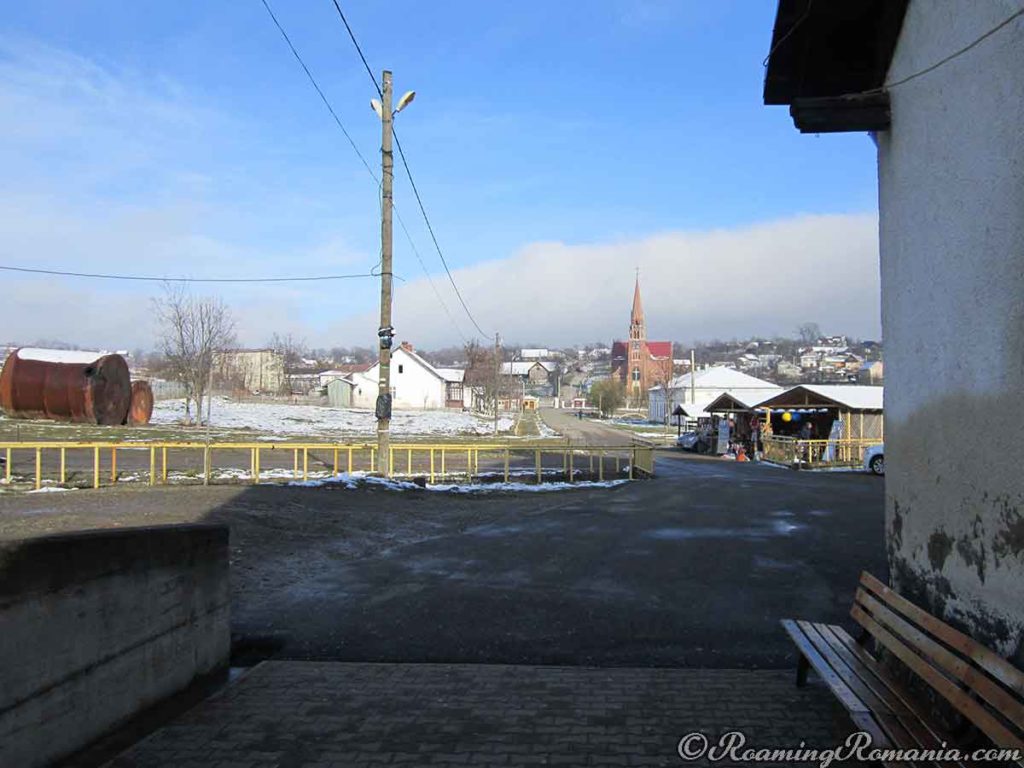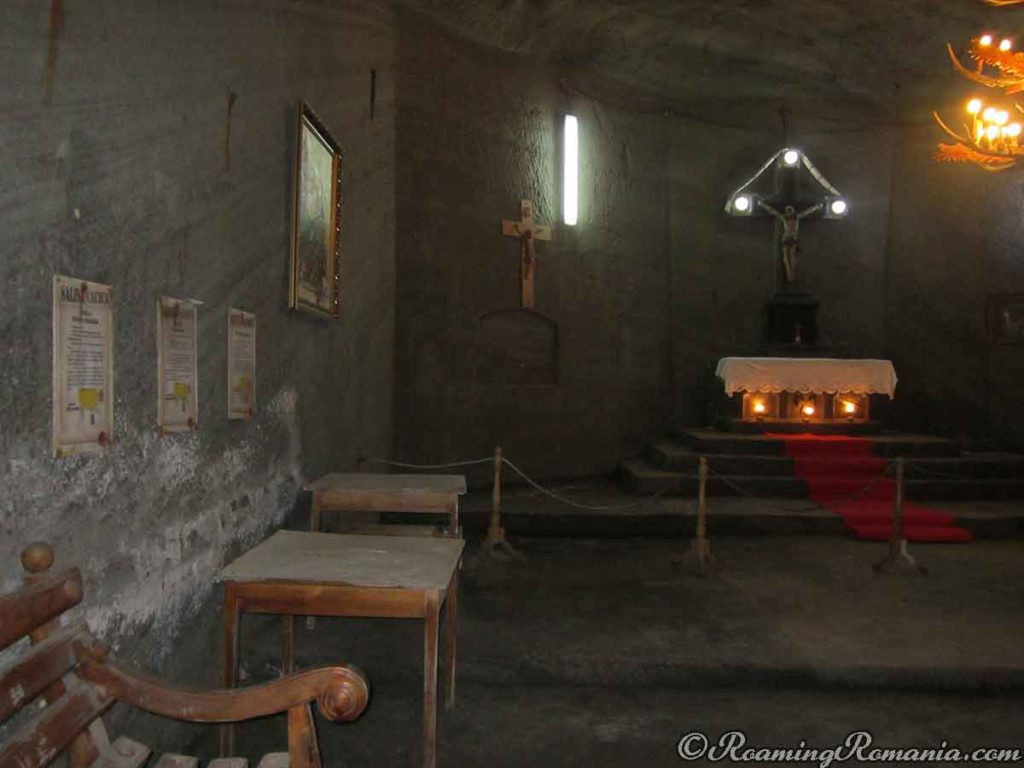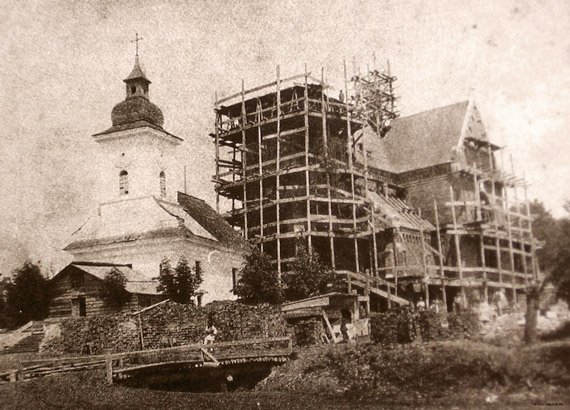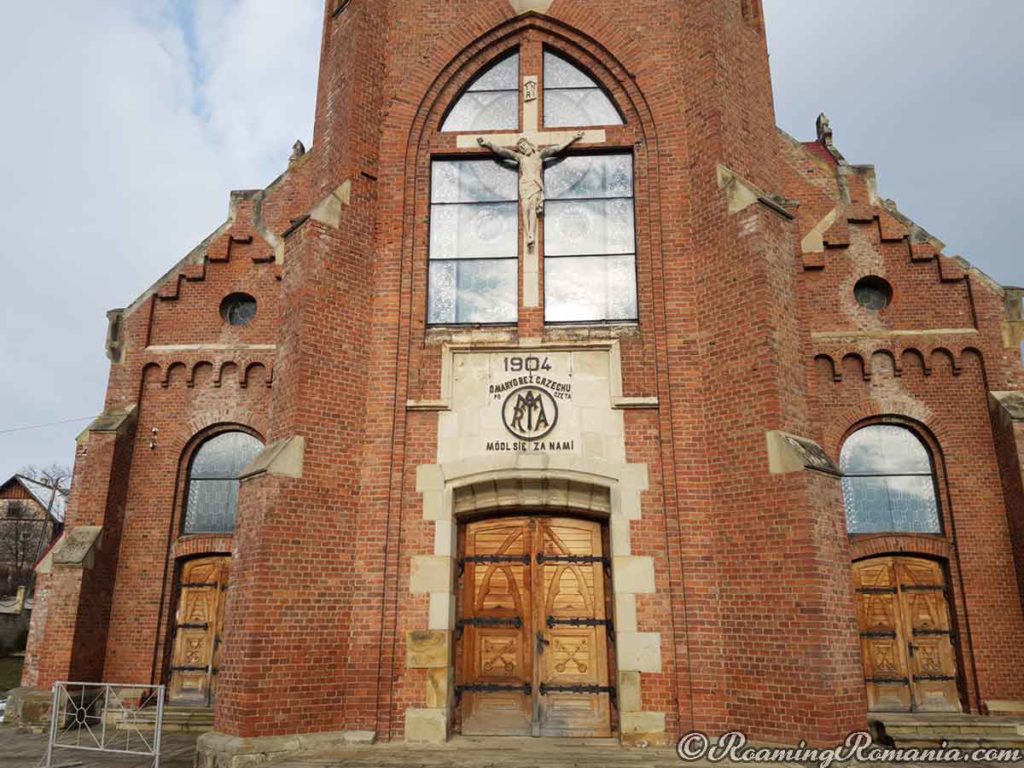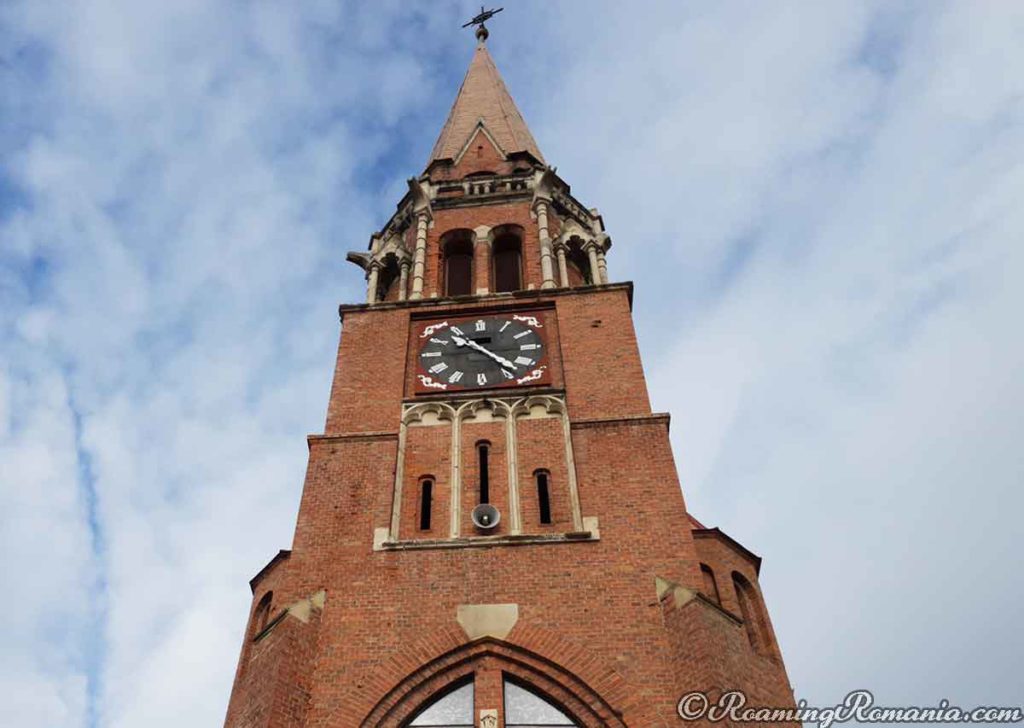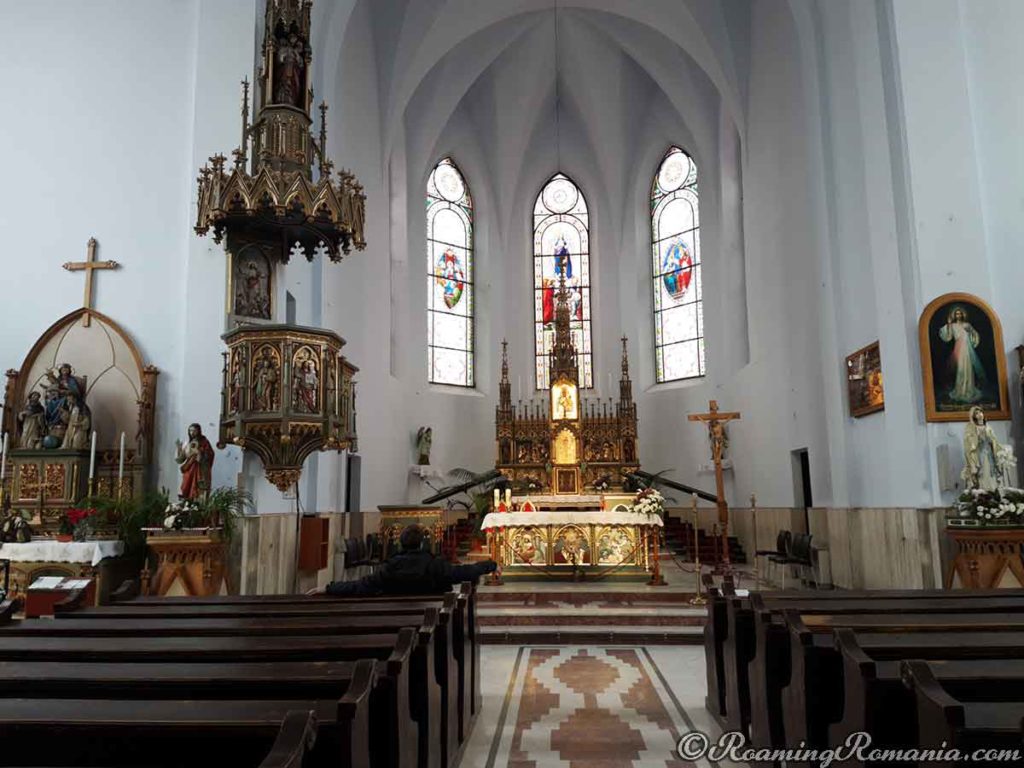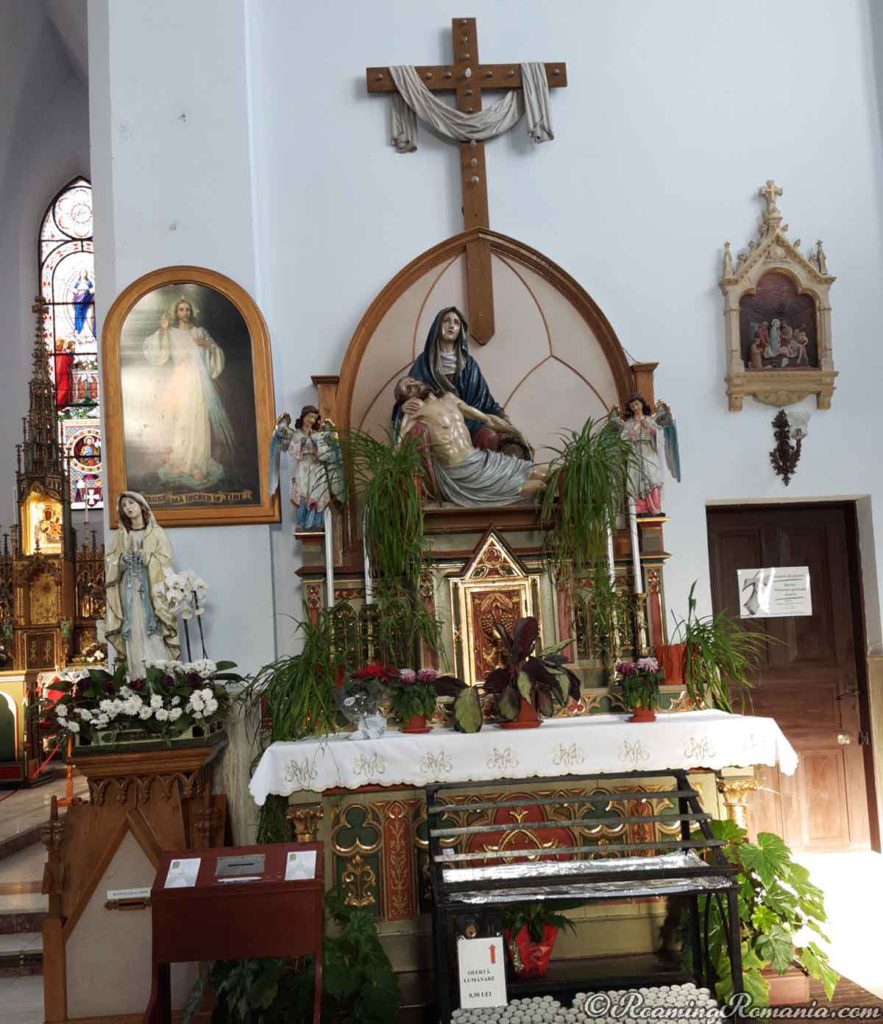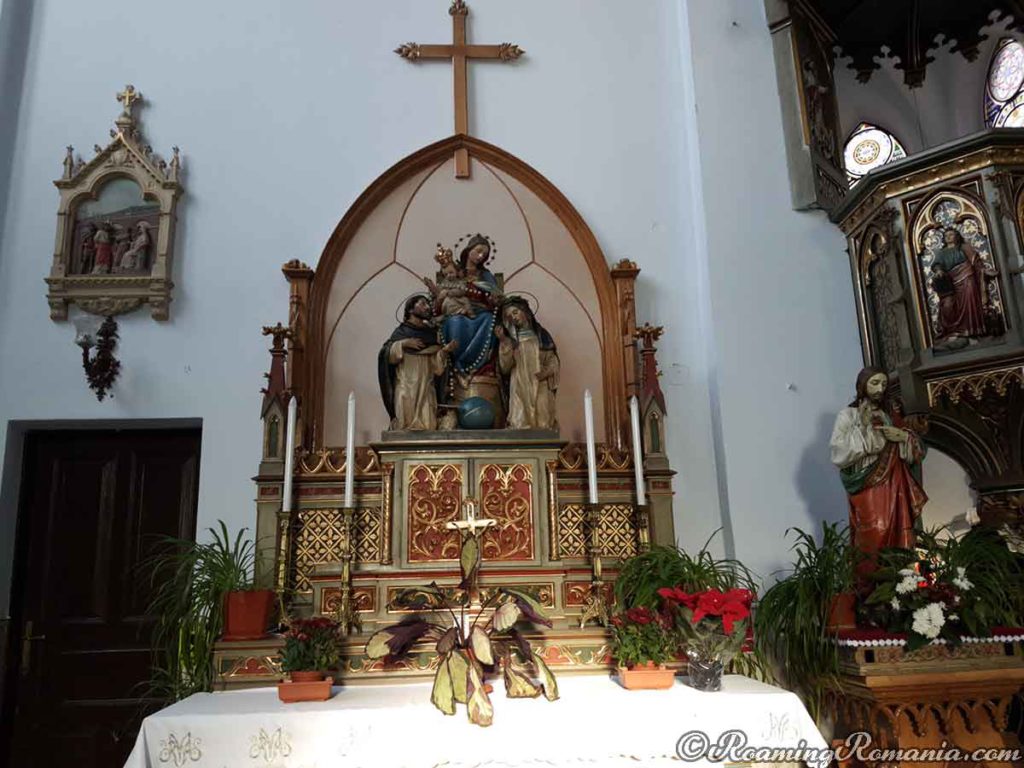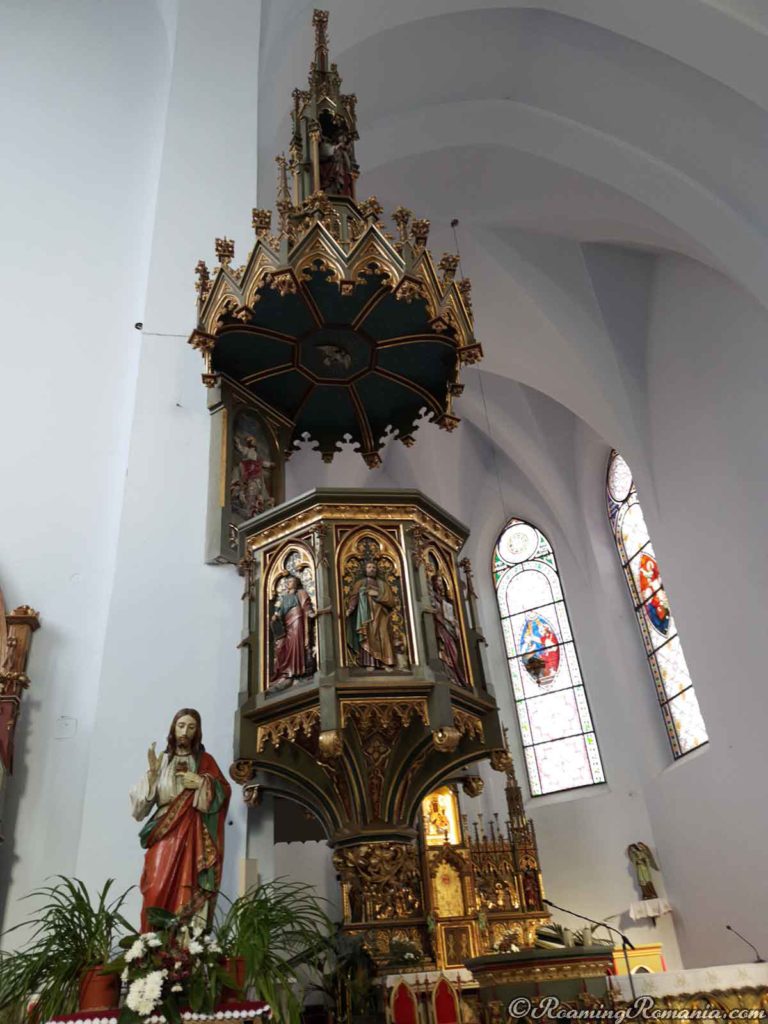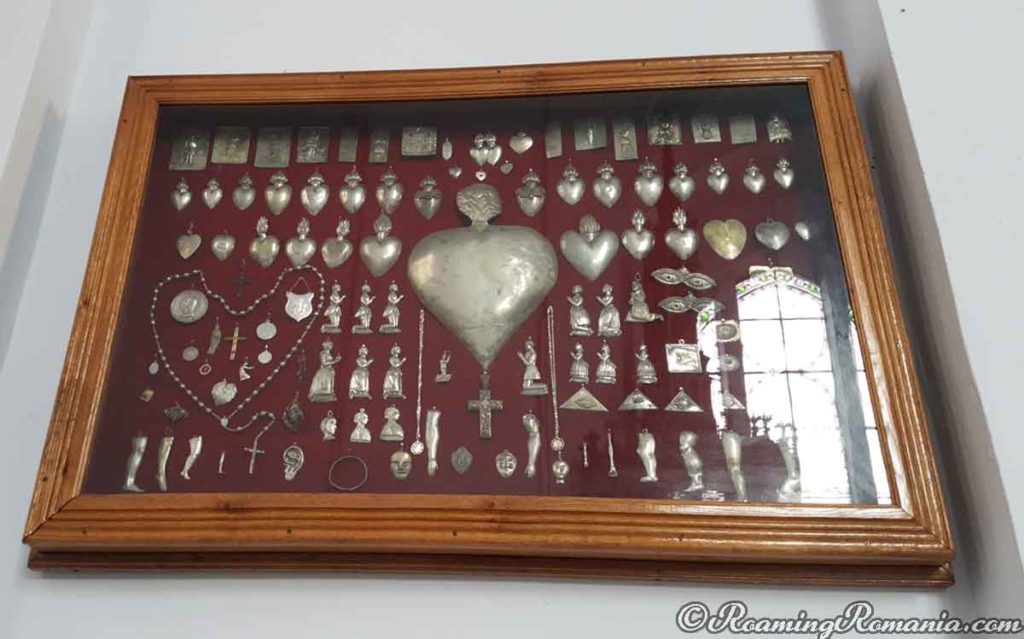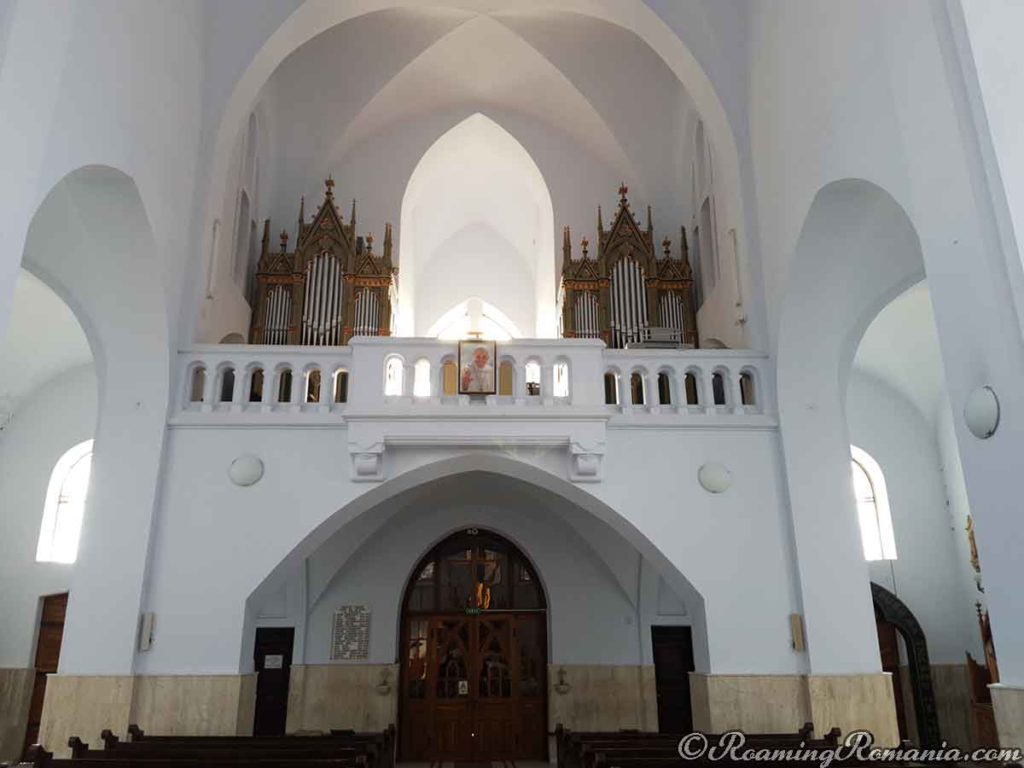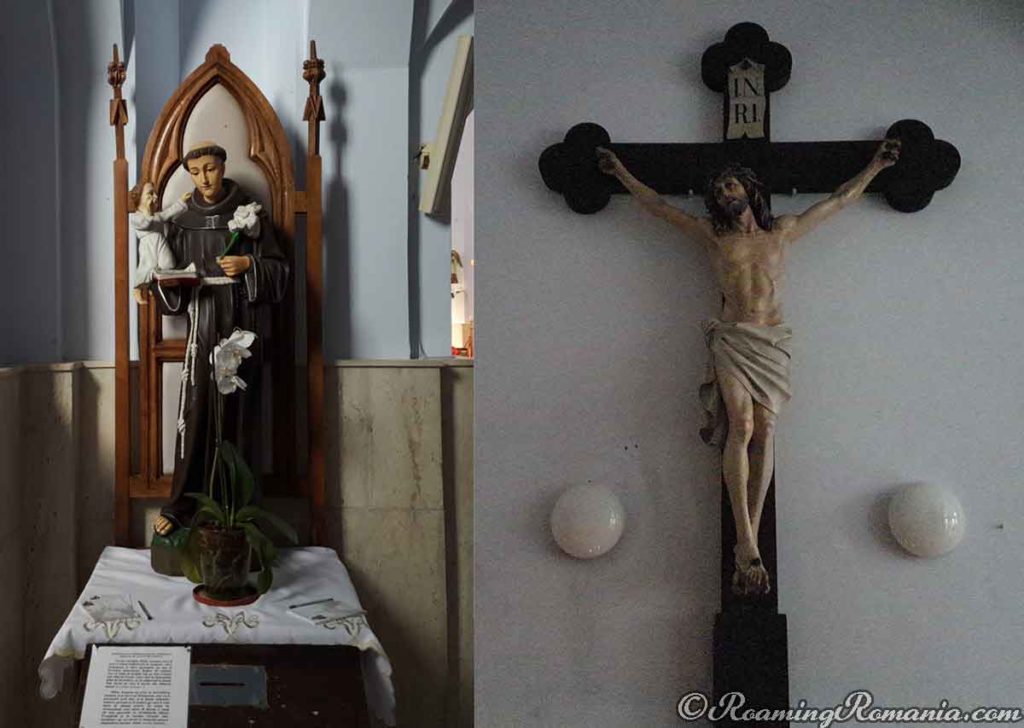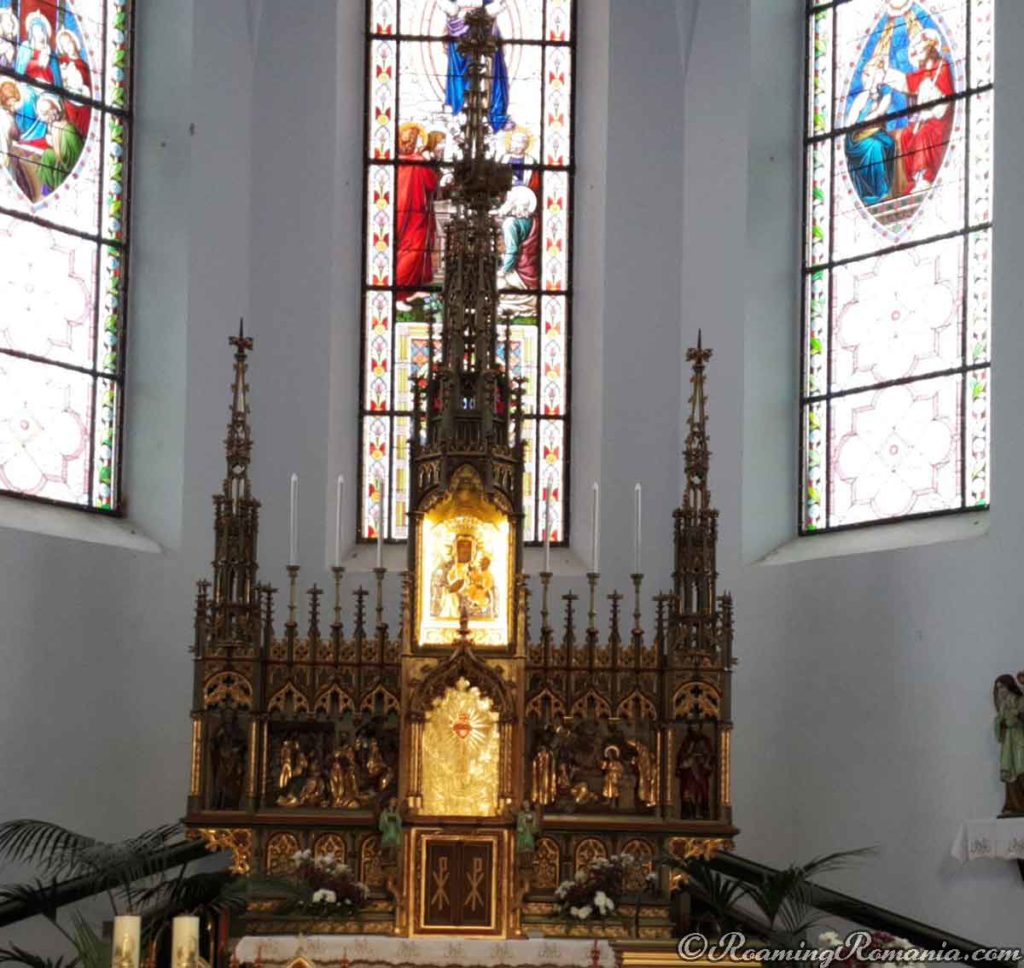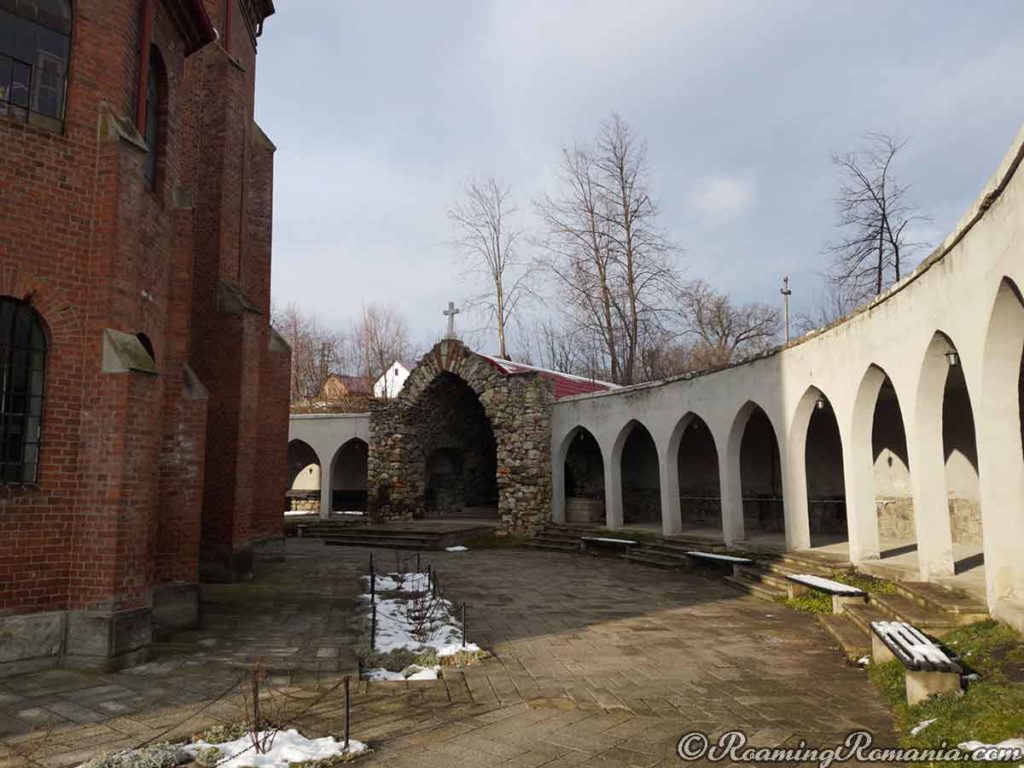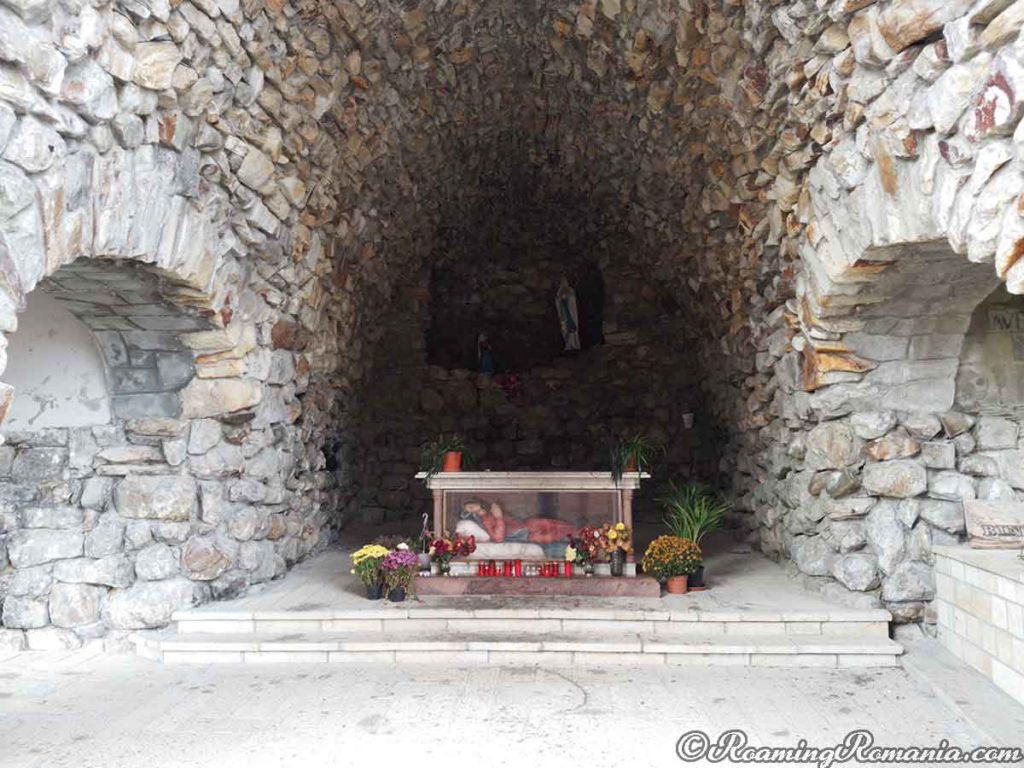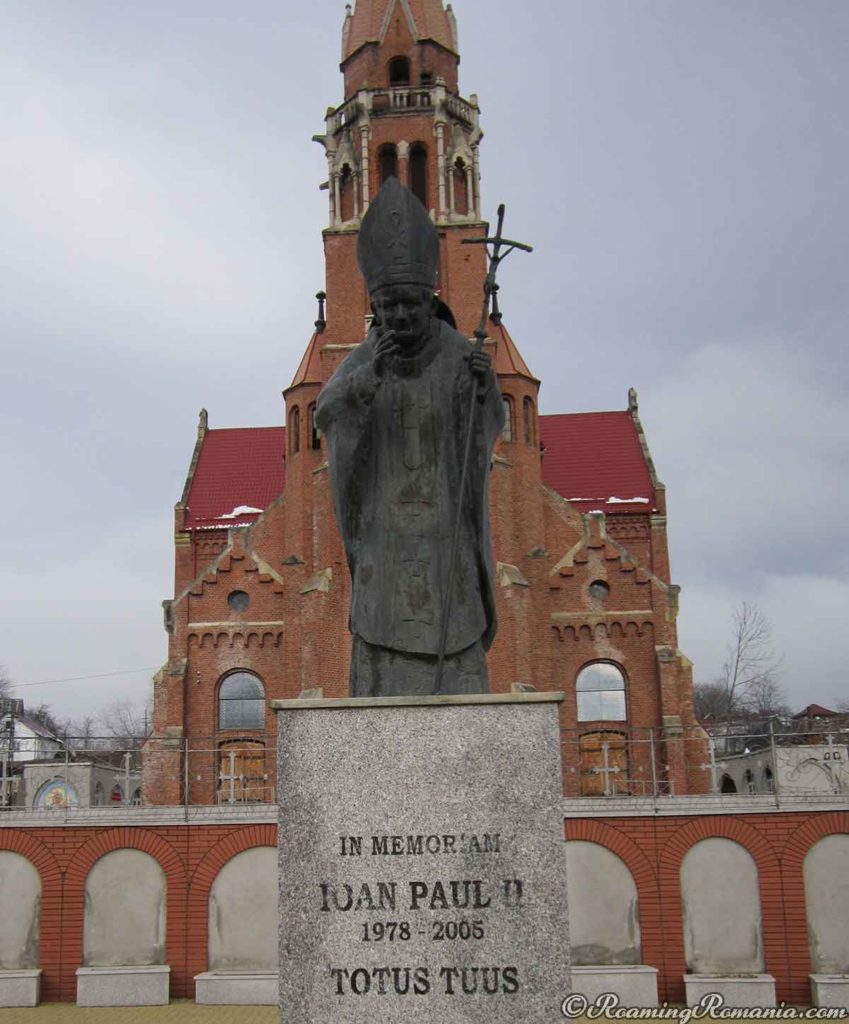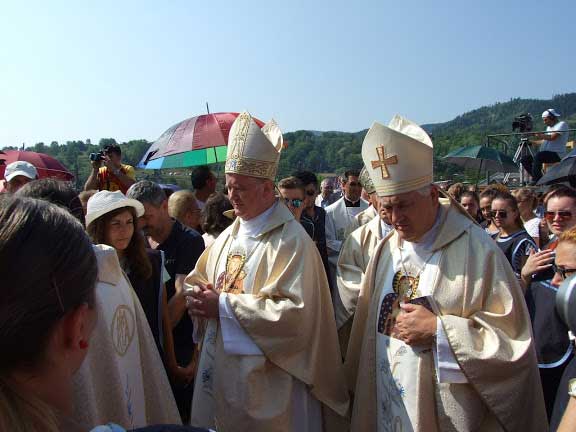Basilica Assumption Cacica – Summary
The Basilica Assumption in Cacica (Bazilica Adormirea Maicii Domnului) is an early 20th century neo-gothic Roman Catholic church (basilica) located in the Cacica Commune in Romania. The church is constructed in the place of a previous wooden church, from 1810, that first served as the towns holly worship center. The churches were constructed to serve the great influx of Roman Catholic Polish migrants who came to Cacica to work on the Cacica Salt mine.
The Basilica Assumption of Cacica has a deep and rich history. Throughout the years it has undergone many physical changes, as well as many holly changes and designations. On August 15, 1996, the church was declared a diocese sanctuary by an episcopal decree passed by the Roman Catholic cleric of Iaşi, Petru Gherghel. A year later on August 15, 1997, with the agreement of the Conference of Catholic Bishops in Romania, the church was designated and recognized as “National Sanctuary” under the blessing of Roman Catholic archbishop Janusz Bolonek.
In the year 2000, the Sanctuar Cacica (Cacica Sanctuary) was officially designated a Minor Basilica by Pope John Paul II. A minor basilica title is a title given to some Roman Catholic church buildings according to canon law. The title of minor basilica can only be appointed by apostolic grant or through immemorial custom. The decree is authorized by the Pope through the Congregation for Divine Worship and the Discipline of the Sacraments.
Basilica Assumption Cacica – Table of Contents
- Basilica Assumption Cacica – History
- Basilica Assumption Cacica – Architecture
- Basilica Assumption Cacica – Attractions
- Basilica Assumption Cacica – Present Day
- Basilica Assumption Cacica – Video
- Basilica Assumption Cacica – Visitor Info
Basilica Assumption Cacica – History
In the late 1700s, salt deposits were discovered in streams in and around what is present-day the Commune of Cacica, in the Bucovina Region of Romania. During the time of the salt discovery, Bucovina was under Habsburg Empire rule and not yet united with Romania. The Habsburg rulers wanted to cut their reliance on importing salt from foreigners so in 1783 the Aulic Council of Vienna passed an order to establish a salt mining committee known as the Secţia Monede şi Mine.
The committee’s duty was to survey the land and gather all the required information needed in order to be able to begin salt mining. They analyzed all the area’s salt springs and found the sources with the greatest deposits of salt where they concluded mining should take place. The committee took a few years to complete its work and in 1791, the Salt Mine of Cacica (Salina Cacica), the area’s first and largest salt mine, had officially opened for business.
The opening of the salt mine saw an influx of workers migrate from different provinces of the Habsburg Empire. The majority of the new inhabitants came from the Polish region of Galicia, as well as from the Polish towns of Bochnia and Wieliczka. Along with the Polish came a few hundred or so Ukrainians. The migrants who came to the region were mainly mine workers and technicians looking for work and new opportunities.
The predominant religion of the area’s new settlers was Roman Catholic. Since the Cacica region’s previous settlements were limited to very small communities of farmers and land workers, there had not yet been established any formidable sized churches in the area. The Roman Catholic migrants were initially spiritually represented and guided by a parish from nearby (20km away distance) town of Gura Humorului.
Around the year 1806, with the help of appeals from the Polish priest Jakub Bogdanowicz, the administrators of the salt mine allowed for the construction and opening of the St. Varvara Chapel. The St. Varvara Chapel was constructed 20 meters deep inside the Cacica mine. It served as the primary chapel for the town’s mine workers. They would meet and pray at the Varvara Chapel every day before heading into the mine for work, as well as at the end of their work shifts.
In 1810 the Romana Catholic community of Cacica erected a wooden church a few hundred yards outside of the Cacica mine to serve all of the area’s Catholic inhabitants. In 1844 Cacica’s first parish had been set up under the guidance of Archbishop Francis of Paula Pischtek. Old records show that the parish, operating out of the wooden church, had around 1,300 Roman Catholics under its spiritual care in the year 1867.
In the late 19th century Roman Catholics in Bucovina were under the jurisdiction of the Roman Catholic Archdiocese of Lviv, Ukraine. Around the year 1890, missionaries from Lviv came to the Cacica region to verify the current state of affairs. They found the wooden Catholic church in a damaged and dilapidated condition. In 1892 the missionaries decided a new church should be rebuilt in place of the old wooden one.
Around the same time, the decision to rebuild the wooden church was made, the Lazarist Monk, Archbishop Joseph Weber, transferred the pastoral ministry of the Cacica Parish to the Order of the Lazarist Monks. Due to initial lack of funding, and because of bureaucracy from the Austrian authorities, work on the new church didn’t take place until the year 1903 and completed a year later in 1904.
Funding for the church mainly came from donations of Catholic members from all areas in Bucovina. The priests who were entrusted with the development of the church sent out missionaries to solicit and collect donations from Hungarian, German, and other ethnic Roman Catholics throughout Bucovina. The priests also held a raffle to collect proceeds that would be put towards the churches development.
Basilica Assumption Cacica – Architecture
The Cacica Basilica Assumption was designed by architect Teodor Marian Talowski and built in the neo-gothic style. It measures 36m long, 17.5m wide and has a 50m high tower. The church is constructed out of carved stone and red brick and is coated with protective asbestos. The basilica contains many decorative ornaments along its outside walls.
Church Exterior
Above the entrance of the church’s massive oak wood doors, there is a highly detailed stone sculpture of Jesus crucified on the cross. The crucifix is positioned in the middle of a window which contains very intricate geometrical and astrological designs. Below the crucifix, there is the monogram of Marry with the Polish inscription that translates to “O Maryo, for us.” Above the monogram, the date 1904 (the Church’s opening) is inscribed.
The basilica’s tower contains a giant Roman Numeral clock that sounds the church’s four bells over a megaphone every hour on the hour. Directly above the clock, at a height of about 30m, there is a circular balcony designed to resemble the form of a chapel. The chapel balcony is supported by stone columns shaped in the form of turrets.
Church Interior
The inside of the church is highly decorated and contains marvelous sculptures and other works of art. Behind the church’s central alter are five beautifully painted and immensely detailed stained-glass windows that represent the five mysteries of the rosary of the Virgin Mary. Ornate stained-glass windows are also found throughout the basilica’s corners as well as at the rear of the church.
The Basilica Assumption contains three lime wood alters painted in oil and gold. The main center alter, an alter to its left, dedicated to St. Joseph, and one to its right, dedicated to St. Varvara, the miner’s patron.
The right alter contains a replica of the Pietà, Michelangelo’s famous statue depicting the Virgin Marry holding Jesus as a child in her arms.
The left alter contains a statue of Marry holding Jesus as a baby in her lap while angels preside at her feet.
On the right side of the left alter is found the church’s spectacular and stunning pulpit. The pulpit represents the figure of “Jesus The Good Shepard.” It’s covered in highly ornamental gold trimming and contains figurines of Roman Catholic Saints that preside over the church and its members.
On the wall to the right of the central altar, there is a glass display case that contains over 100 votive silver and gold objects. The objects were given to the church by various pilgrims throughout the years as offerings of the fulfillment of their holly vows. The objects range from figures such as hearts, arms, and legs, to masks, crosses, and figurines kneeling in prayer.
At the rear of the church, there is a choir balcony that was constructed in 1914 and sanctified at a holly festival in 1918. The choir balcony contains a very beautiful and large classical organ which was brought to the church in 1937. The organ sustained damages in 1944 during WWII and was reconstructed to a pristine condition in 1998.
Within the inside of the church, there are many other beautiful sights to behold. There are decorative holly statutes and figurines found in many areas throughout the interior. Crucifixes in the front and at the rear of the church showcase the suffering Jesus endured on the cross. The large inside walls are lined with paintings and other holly depictions.
The inside also contains a giant and gorgeous chandelier, which dates to 1907, and hangs imposingly from the ceiling above the front alter. On the inside walls, there also hang various marble plaques, some of which contain holly scripture, others which are commencement plaques that honor significant dates in the church’s history.
Basilica Assumption Cacica – Attractions
Besides the stunning architecture, the beautiful decorations and paintings, and the holly statues and figurines of the Basilica Assumption, the church also contains three very unique and fascinating attractions that deserve their own section on this page.
Black Madonna
In the basilica’s center alter there is a replica of the Black Madonna of Częstochowa. The original Black Madonna is a revered icon of the Virgin Mary that’s housed at the Jasna Góra Monastery in Częstochowa, Poland. The replica which is found in the center alter in the basilica was painted sometime in the early 1600s and brought to Cacica in 1809. It was housed in the original wooden catholic church that originally stood in the place where today’s current church is found.
The Madonna Black replica is painted on cloth with silver-gilt and embroidered in sculpted wood. The painting is of the Virgin Marry holding the baby Jesus in her arms while pointing to God, to resemble her saying “Do all that he says.” The baby Jesus clutches a holly book in his left hand and raises his right to show him receiving his blessing.
Lourdes Grotto
Directly outside and behind the church, there is a representation of the Sanctuary of Our Lady of Lourdes (Lourdes Grotto) of Lourdes, France. When the Basilica Assumption was completed in 1904 developers decided to construct a wall behind the church to protect it from the slope pressing forward and causing damage to the edifice. In 1908 a grotto cave was built into the wall to honor the Lady of Lourdes.
Around the year 1938, at the request of parish priest Henryk Wochowski, the grotto was enlarged, dug deeper, and surrounded, on both sides, by galleries. The new, neo-gothic style, grotto and galleries were created in order to provide protection from bad weather to the pilgrims that held confession and holly communion in their enclosures.
Inside the grotto, there is the original massive stone alter which was constructed in 1908. The alter serves the celebration of the holly mass for pilgrims who come from all over the world to worship at it. Also found inside the grotto are plaster statues of the Holly Mother of God Marry and of St. Bernadette Soubirous. Legend has it that the statutes were originally placed in the church but were mysteriously found located inside the grotto the following day.
In the grotto, on the right side of the alter, there is a water well that is said to contain healing properties. Pilgrims use the water faithfully to cure their elements and to bring back home to bless their dwellings and families. On the left side of the alter there is a designated crevasse that is used for the placement of burning candles which is inspired by the Orthodox faith.
Pope John Paul II Statue
On August 15, 2010, a market square and statue of Pope John Paul II, were erected in front of the basilica in celebration of the 10-year anniversary of when the church was awarded the title of “Minor Basilica”. The monument was unveiled by Poland’s Archbishop of Gniezno, Henryk Józef Muszyński and Bishop Petru Gherghel. The unraveling ceremony was attended by many prominent catholic bishops in the region.
The Pope John Paul II statue in front of the basilica in Cacica is constructed out of bronze and measures 2.2 meters high and weighs 800kg. It was created by a Polish artist and donated to Cacica from the Catholic community of Rybnik, which is intertwined with the Catholic communities of Suceava County. The back of the statue contains a bronze plate that has a polish inscription which commemorates and unifies the neighboring Catholic Polish and Romanian communes.
Basilica Assumption Cacica – Present Day
Today the Basilica Assumption in Cacica serves as one of the most important and prominent Catholic Church’s in all of Romania. The basilica has a thriving community of devote Catholics who come to attend church services from near by communes, as well as attendees who come from as far as Poland, Ukraine, and all areas of Romania. The church hosts significant Catholic events, some of which have thousands of guests, throughout the year.
Every year from August 14th to the 15th the church hosts the Solemnity of the Assumption, at an alter setup in front of the church. Visitors come from all corners of Romania, as well as from Poland, Germany, Hungary, Austria, Italy, France, and Belarus to attend the two-day event. Many guests camp out in tents in front of the church as well as in the field at the salt mine across the street. The services are conducted and run by over 100 different prominent priests who come from all over Europe to provide guidance to the pilgrims.
Basilica Assumption Cacica – Video
Basilica Assumption Cacica – Visitor Info
Location
The Basilica Assumption is located in the village of Cacica, of the Cacica Commune in North Eastern Romania. The church is found in the village’s center at Str. Main, no. 869, located directly across the street from the Salt Mine of Cacica.
Visitation
The Basilica is open daily and tourists are allowed to enter and take pictures inside the building during hours when service is not taking place. Guests are also allowed to attend worship and prayer services as long as they act in a respectful manner.
The basilica’s service hours are found here.
